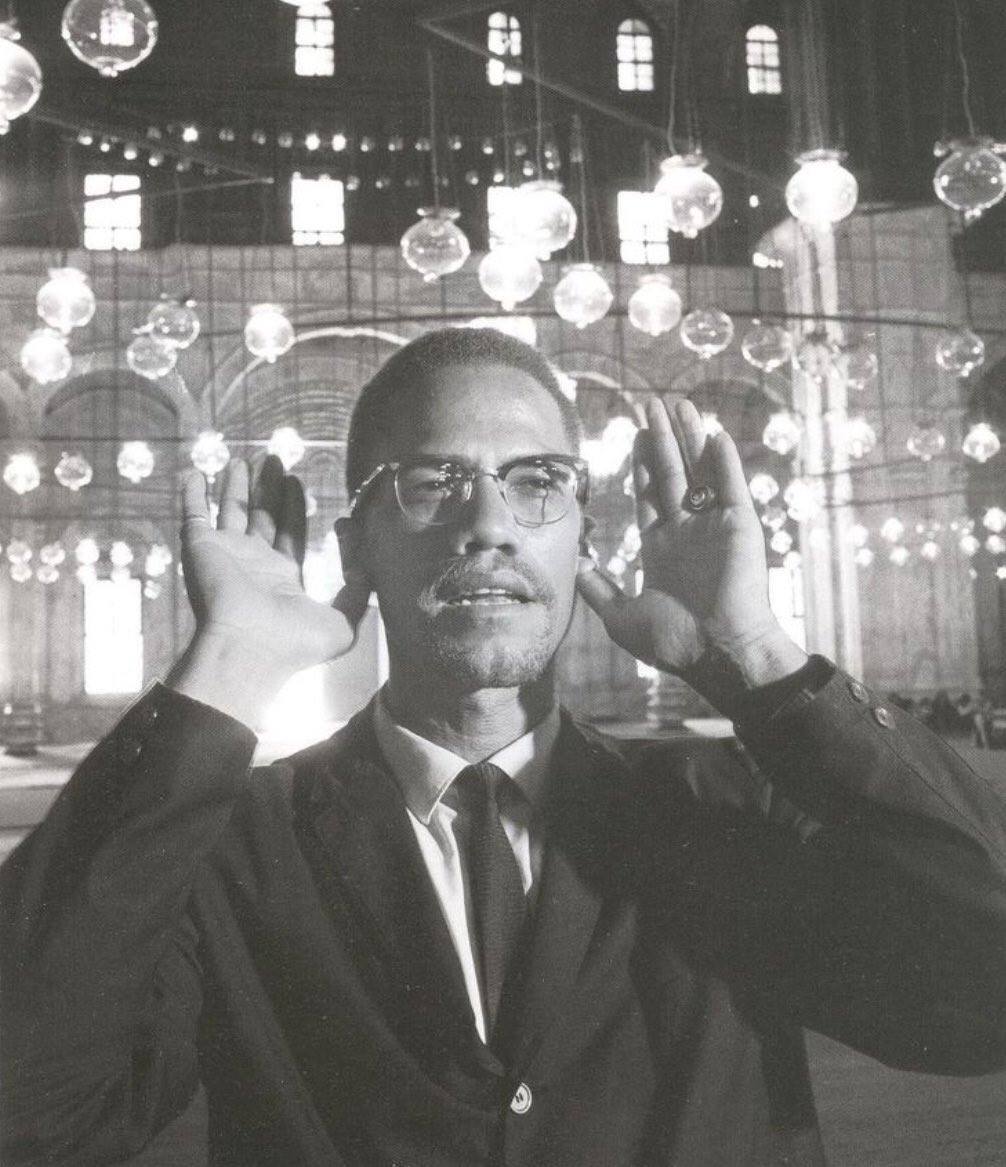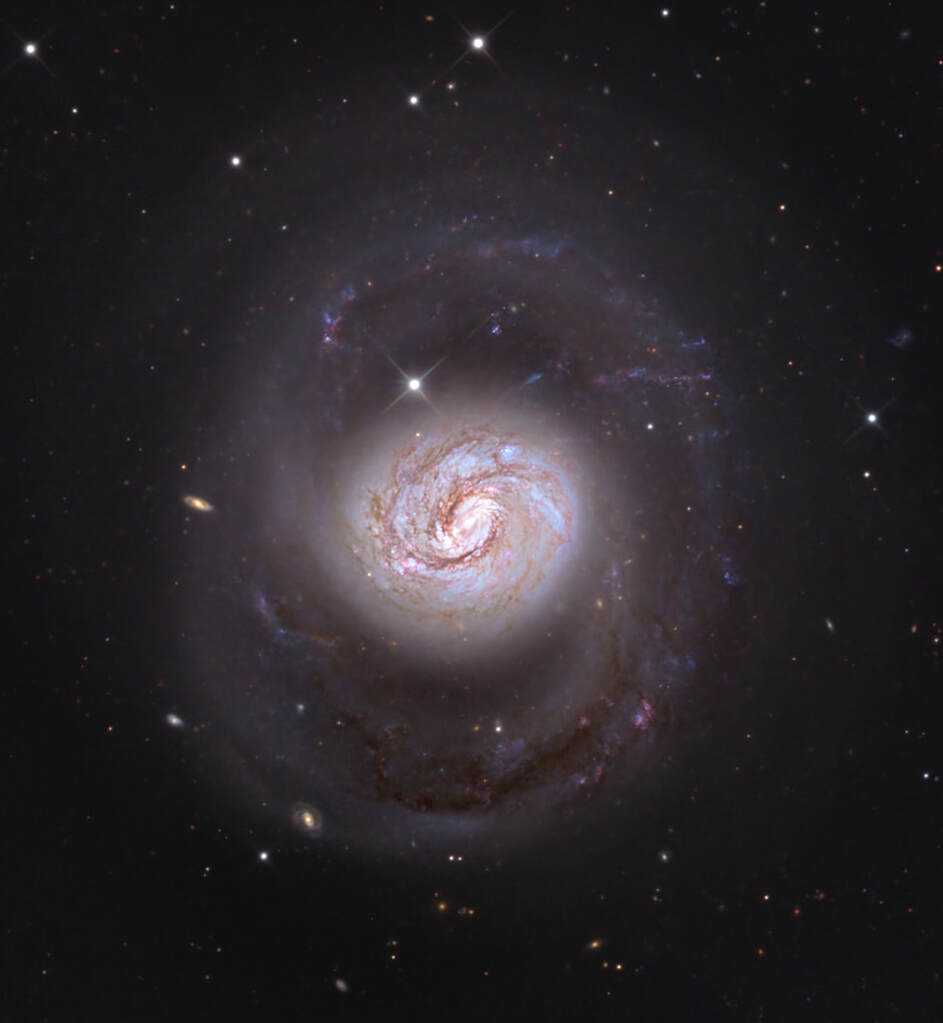Blog
This image of the spiral galaxy UGC 11105 is not as bright and vivid as some other Hubble Pictures of the Week. This softly luminous galaxy — lying in the constellation Hercules, about 110 million light-years from Earth — seems outshone by the sparkling foreground stars that surround it. The type II supernova which took place in this galaxy in 2019, while no longer visible in this image, definitely outshone the galaxy at the time! To be more precise, UGC 11105 has an apparent magnitude of around 13.6 in the optical light regime (this image was created using data that covers the heart of the optical regime, in addition to ultraviolet data). Astronomers have different ways of quantifying how bright celestial objects are, and apparent magnitude is one of them.
Firstly, the ‘apparent’ part of this quantity refers to the fact that apparent magnitude only describes how bright objects appear to be from Earth, which is not the same thing as measuring how bright they actually are. For example, in reality the variable star Betelgeuse is about 21 000 times brighter than our Sun, but because the Sun is much, much closer to Earth, Betelgeuse appears to be vastly less bright than it. The ‘magnitude’ part is a little harder to describe, because the magnitude scale does not have a unit associated with it, unlike, for example, mass, which we measure in kilograms, or length, which we measure in metres. Magnitude values only have meaning relative to other magnitude values. Furthermore, the scale is not linear, but is a type of mathematical scale known as ‘reverse logarithmic’, which also means that lower-magnitude objects are brighter than higher-magnitude objects.
As an example, UGC 11105 has an apparent magnitude of around 13.6 in the optical, whereas the Sun has an apparent magnitude of about -26.8. Accounting for the reverse logarithmic scale, this means that the Sun appears to be about 14 thousand trillion times brighter than UGC 11105 from our perspective here on Earth, even though UGC 11105 is an entire galaxy! The faintest stars that humans can see with the naked eye come in at about sixth magnitude, with most galaxies being much dimmer than this. Hubble, however, has been known to detect objects with apparent magnitudes up to the extraordinary value of 31, so UGC 11105 does not really present much of a challenge.

James Lee Jamerson (January 29, 1936 – August 2, 1983) was an American bass player. He was the uncredited bassist on most of the Motown Records hits in the 1960s and early 1970s (Motown did not list session musician credits on their releases until 1971), and is now regarded as one of the most influential bass players in modern music history. He was inducted into the Rock and Roll Hall of Fame in 2000. As a session musician he played on twenty-three Billboard Hot 100 number-one hits, as well as fifty-six R&Bnumber-one hits.
In its special issue “The 100 Greatest Bass Players” in 2017, Bass Player magazine ranked Jamerson number one and called him the most important and influential bass guitarist. In 2020, Rolling Stonemagazine ranked Jamerson number one in its list of the 50 greatest bassists of all time.
A native of Edisto Island, South Carolina, he was born to James Jamerson Sr. and Elizabeth Bacon. He was raised in part by his grandmother who played piano, and his aunt who sang in church choir. As a child he was a competent piano player and performed in public. He briefly played the trombone. As a teenager he was a reserved person, and passionate about music. He listened to gospel, blues and jazz music on the radio.
more...Edwin Thomas “Ed” Shaughnessy (January 29, 1929 – May 24, 2013) was a swing music and jazz drummer long associated with Doc Severinsen and a member of The Tonight Show Band on The Tonight Show Starring Johnny Carson.
Shaughnessy was born in Jersey City, New Jersey and grew up in the New York City area, working in the 1940s with George Shearing, Jack Teagarden, and Charlie Ventura. In the 1950s he worked in the Charlie Ventura, Benny Goodman and Tommy Dorsey bands. In the 1960s he played for Count Basie prior to joining The Tonight Show Band. He was the drummer on Bashin’: The Unpredictable Jimmy Smith in 1962 which featured big band arrangements by Oliver Nelson, including the pop hit “Walk on the Wild Side” which peaked at #21 on the Billboard chart. Shaughnessy recorded extensively throughout his career and was known for his drum competitions with Buddy Rich.
more...
Messier 77 (M77), also known as NGC 1068 or the Squid Galaxy, is a barred spiral galaxy in the constellation Cetus. It is about 47 million light-years (14 Mpc) away from Earth. Messier 77 was discovered by Pierre Méchain in 1780, who originally described it as a nebula. Méchain then communicated his discovery to Charles Messier, who subsequently listed the object in his catalog.Both Messier and William Herschel described this galaxy as a star cluster. Today, however, the object is known to be a galaxy.

“Big Eye” Louis Nelson Delisle (January 28, 1885 – August 20, 1949) was an American early twentieth-century Dixieland jazz clarinetist in New Orleans, Louisiana, United States. He also played double bass, banjo, and accordion.
Nelson Delisle was born into a family who were Creoles of color. He spent most of his life in New Orleans, Louisiana. He studied clarinet with the elder Lorenzo Tio.
more...Osbourne Ruddock (28 January 1941 – 6 February 1989), better known as King Tubby, was a Jamaican sound engineer who influenced the development of dub in the 1960s and 1970s.
Tubby’s studio work, which saw him elevate the role of the mixing engineer to a creative fame previously only reserved for composers and musicians, would prove to be influential across many genres of popular music. He is often cited as the inventor of the concept of the remix that later became ubiquitous in dance and electronic music production. Singer Mikey Dread stated, “King Tubby truly understood sound in a scientific sense. He knew how the circuits worked and what the electrons did. That’s why he could do what he did”. King Tubby’s first interaction with the music industry came in the late 1950s with the rising popularity of Jamaican sound systems, which were to be found all over Kingston and which were developing into enterprising businesses. As a talented radio repairman, Tubby soon found himself in great demand by most of the major sound systems of Kingston, as the tropical weather of the Caribbean island (often combined with sabotage by rival sound system owners) led to malfunctions and equipment failure. Tubby owned an electrical repair shop on Drumalie Avenue, Kingston, that fixed televisions and radios. It was here that he built large amplifiers for the local sound systems. In 1961–62, he built his own radio transmitter and briefly ran a pirate radio station playing ska and rhythm and blues which he soon shut down when he heard that the police were looking for the perpetrators. Tubby eventually formed his own sound system, Tubby’s Hometown Hi-Fi, in 1958. It became a crowd favourite due to the high quality sound of his equipment, exclusive releases and Tubby’s own echo and reverb sound effects, at that point something of a novelty.The sound also launched the career of U-Roy, its featured toaster
King Tubby was shot dead on 6 February 1989, outside his home in Duhaney Park, Kingston, upon returning from a session at his Waterhouse studio. His untimely death was believed to be the outcome of a robbery.
more...Ronnie Scott OBE (born Ronald Schatt; 28 January 1927 – 23 December 1996) was a British jazztenor saxophonist and jazz club owner. He co-founded Ronnie Scott’s Jazz Club in London’s Sohodistrict, one of the world’s most popular jazz clubs, in 1959. Ronnie Scott was born in Aldgate, East London, into a Jewish family. His father, Joseph Schatt, was of Russian ancestry, and his mother Sylvia’s family attended the Portuguese synagogue in Alie Street. Scott attended the Central Foundation Boys’ School.
more...
It is located approximately 1° southwest of the central region of the Orion Nebula ; the star that illuminates it is the variable HD 36412, a white star of spectral class A7V, which is also an eclipsing variable and therefore also bears the variable star acronym EY Orionis. Its variation is between the ninth and tenth magnitude and has a total period of approximately 16.7 days. The light from this star gives the surrounding gases a bluish-white light.
With a parallax of 2.61 mas , which corresponds to a distance of 383 parsecs (1250 light years ), the nebula and the star associated with it would be physically located in the region of the Orion Molecular Nebula Complex , and in particular it is part of the same cloud complex that includes the region of ionized gases of the Orion Nebula, whose southwestern part branching in the direction of vdB 42 is known as the Extended Orion Nebula .

Robert Hutcherson (January 27, 1941 – August 15, 2016) was an American jazz vibraphone and marimba player. “Little B’s Poem”, from the 1966 Blue Note album Components, is one of his best-known compositions. Hutcherson influenced younger vibraphonists including Steve Nelson, Joe Locke, and Stefon Harris.
Bobby Hutcherson was born in Los Angeles, California, to Eli, a master mason, and Esther, a hairdresser. Hutcherson was exposed to jazz by his brother Teddy, who listened to Art Blakey records in the family home with his friend Dexter Gordon. His older sister Peggy was a singer in Gerald Wilson‘s orchestra. Hutcherson went on to record on a number of Gerald Wilson’s Pacific Jazz recordings as well as play in his orchestra. Hutcherson’s sister personally introduced Hutcherson to Eric Dolphy (her boyfriend at the time) and Billy Mitchell. Hutcherson was inspired to take up the vibraphone when at about the age of 12 he heard Milt Jackson with Thelonious Monk, Percy Heath, Kenny Clarke and Miles Davis playing “Bemsha Swing” on the Miles Davis All Stars, Volume 2 album (1954). Still in his teens, Hutcherson began his professional career in the late 1950s working with tenor saxophonist Curtis Amy and trumpeter Carmell Jones, as well as with Dolphy and tenor saxophonist Charles Lloyd at Pandora’s Box on the Sunset Strip.
more...Elmore James (Brooks; January 27, 1918 – May 24, 1963) was an American blues guitarist, singer, songwriter, and bandleader. Noted for his use of loud amplification and his stirring voice, James was inducted into the Rock and Roll Hall of Fame in 1992. His slide guitar technique earned him the nickname “King of the Slide Guitar”.
Elmore James was born Elmore Brooks in Richland, Holmes County, Mississippi, the son of 15-year-old Leola Brooks, a field hand. His father was probably Joe Willie “Frost” James, who moved in with Leola, and Elmore took his surname. He began making music at the age of 12, using a simple one-string instrument (diddley bow, or jitterbug) strung on a shack wall. As a teen he performed at dances under the names Cleanhead and Joe Willie James.
more...Oran Thaddeus “Hot Lips” Page[1] (January 27, 1908 – November 5, 1954) was an American jazztrumpeter, singer, and bandleader. He was known as a scorching soloist and powerful vocalist.
Page was a member of Walter Page‘s Blue Devils, Artie Shaw‘s Orchestra and Count Basie‘s Orchestra, and he worked with Ma Rainey, Bessie Smith and Ida Cox. He was one of the five musicians booked for the opening night at Birdland with Charlie Parker in 1949.
Oran Thadeus Page was born in Dallas, Texas, United States, to a schoolteacher and musician mother.
more...Wolfgang Amadeus Mozart (27 January 1756 – 5 December 1791) was a prolific and influential composer of the Classical period. Despite his short life, his rapid pace of composition resulted in more than 800 works of virtually every Western classical genre of his time. Many of these compositions are acknowledged as pinnacles of the symphonic, concertante, chamber, operatic, and choral repertoire. Mozart is widely regarded as among the greatest composers in the history of Western music, with his music admired for its “melodic beauty, its formal elegance and its richness of harmony and texture”.
Born in Salzburg, then in the Holy Roman Empire and currently in Austria, Mozart showed prodigious ability from his earliest childhood. Already competent on keyboard and violin, he composed from the age of five and performed before European royalty. His father took him on a grand tour of Europe and then three trips to Italy. At 17, he was a musician at the Salzburg court but grew restless and travelled in search of a better position.
While visiting Vienna in 1781, Mozart was dismissed from his Salzburg position. He stayed in Vienna, where he achieved fame but little financial security. During his final years there, he composed many of his best-known symphonies, concertos, and operas. His Requiem was largely unfinished by the time of his death at the age of 35, the circumstances of which are uncertain and much mythologised.
more...More Posts
- Cosmos UGCA 307
- Terry Cox
- Erma Franklin
- Blue Mitchell
- Roy Haynes
- Lightnin’ Slim
- World Music Celtica Pipes
- Daily Roots The Ethiopians
- Cosmos Sh2-6275
- James Taylor
- Al Jarreau
- Wardell Quezergue
- Don Drummond
- World Music African Brothers Band
- Daily Roots Bob Marley Beverly Cottman Memorial
- Beverly Cottman Memorial
- Holi Festival of Colors 2023
- Echoes of Freedom
- Cosmos IC 1805/1848
- Bobby McFerrin

